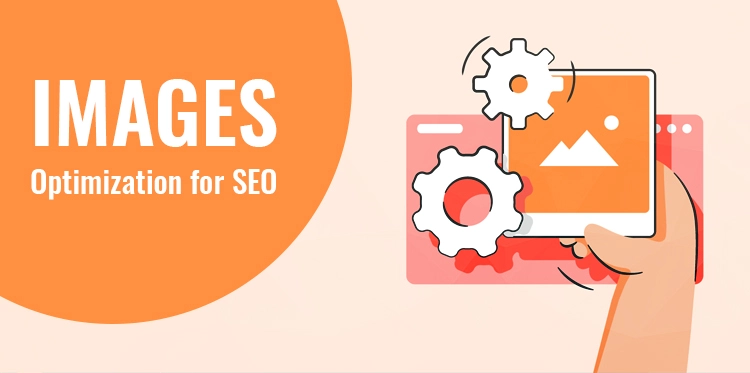In the vibrant world of digital marketing, visuals play an integral role in drawing audiences’ attention. But did you know these visuals, specifically images, can also be optimized for better search engine performance?
Table of Contents
Yes, we’re talking about “SEO for images,” a crucial but often overlooked aspect of SEO.
This guide will walk you through the ins and outs of image optimization.
By giving you tips and tricks on everything from file formats to naming images for SEO, we aim to empower web developers, SEO practitioners, and content marketers with the knowledge required to optimize images for SEO fully.
Whether you’re a beginner or a seasoned professional, our SEO for images guide provides insights that will help you boost your website’s visibility in search engine results.
So, let’s dive in and unravel the mystery of image SEO!
How to Optimize SEO for Images
Shaping your images to become SEO-friendly involves more than just presenting killer visuals.
Optimizing images for SEO places equal importance on your images’ aesthetics and visibility in the digital space. Understanding SEO for images is indispensable for making your images work with your SEO strategy.
But don’t worry, optimizing images for SEO isn’t as daunting as it may initially seem.
It involves choosing the correct file format, accurately naming images for SEO, providing meaningful alt text, and managing image size.
All with the dual goal of enhancing your audience’s browsing experience and helping search engine bots understand your images more accurately.
We’ll dive into all these in more detail below.
The most important thing you must know is that a well-optimized image can remarkably boost your site’s overall SEO. Never just take or download a photo, upload it, and leave it at that.
The internet is a visual place; how you present and use images is vital to your website’s success.
Okay, with that in mind, let’s make it happen.
How to Choose the Right Image File Format (SEO for Images)

Image by Freepik
Whether you’re a web developer, an SEO practitioner, or a content marketer, you’re likely familiar with the common problem of choosing between JPEG and PNG when saving your images.
While both have unique benefits, understanding which file format to use in a specific scenario can significantly optimize your images for SEO purposes.
JPEG
JPEG, or Joint Photographic Experts Group, is typically your go-to image format for complex images like photographs.
It uses a lossy compression mechanism that significantly reduces file size while maintaining acceptable image quality, providing a significant advantage in page loading speeds, an essential SEO factor.
PNG
On the other hand, PNG, or Portable Network Graphics, is an ideal choice for simpler graphics, logos, and other design elements.
It uses a lossless compression mechanism that preserves the image’s full quality, making it apt for images with less complex color data and sharp contrasts.
SVG
Another option is SVG, or Scalable Vector Graphics, an ideal choice for various applications, from web design and user interfaces to vector images, logos, and illustrations. SVG loads quickly on web pages, enhancing the user experience.
The first step to optimizing SEO for images?
Choose the proper file format based on your particular needs. Not only can this contribute to the overall quality of your images, but it also significantly affects your website’s SEO performance.
WEBP Format
You’ve probably seen the WEBP image format popping up around the web, especially if you’re trying to download photos from other websites.
Google developed this fresh image format for the web to create smaller and richer images.
Like JPEG, WEBP employs lossy compression—but takes it a step further by providing about 25-34% more compression than JPEG, without significantly impacting the image quality. For those who appreciate the lossless quality of PNGs, the WEBP format delivers similarly with superior compression.
In an era where site speed and page performance affect SEO and user experience, a switch to the WEBP format could be a wise decision.
Choosing the appropriate file format, be it JPEG, PNG, SVG, or WEBP, based on the specific needs, not only contributes to the visual appeal of your content but also significantly impacts your website’s SEO effectiveness.
SEO Image Naming

Image by Freepik
So, naming images for SEO – one effective yet commonly overlooked step in optimizing images for SEO is accurately naming your images.
How exactly does the file name of an image affect SEO? The answer lies in aiding search engines to index your images correctly, improving your website’s search ranking.
Consider this:
A file named ‘DSC12345.jpg ‘ provides little information to the search engine crawlers. Compare this to an image named ‘golden-retriever-puppy.jpg.’ The latter gives search engines a context of what the image is all about.
To ace the art of naming images for SEO, follow a few simple practices:
- Be Descriptive: Just like in our example, describe what the image is about in simple terms.
- Use Keywords: Incorporate relevant keywords into your file name.
- Use Dashes: Use hyphens to separate words in your file name. Avoid using spaces or underscores, as search engines might not read them correctly.
- Be Accurate and Descriptive: Describe what is in the image as accurately as possible.
- Prioritize Brevity: Be concise and to the point.
- Use Keywords: Work a keyword or two into your alt text when it’s natural.
- Resize Your Images: Aim to use the smallest file size that provides the necessary visual quality. Accomplish this by resizing your images before uploading them to your site.
- Image Compression Tools: Tools such as TinyPNG or JPEG Optimizer can help reduce image file size while maintaining a good-quality image. If you’re using a platform like WordPress to host your website, some plugins can optimize all the images on your site.
- Choose Appropriate File Format: As discussed earlier, understanding when to use JPEG (lossy compression), PNG (lossless compression), or WEBP can be instrumental in managing your image sizes and enhancing site performance.
Correctly naming your image files plays a major role in recognizing and ranking your website by search engines. It is a straightforward yet effective strategy in your journey to optimize images for SEO.
Alt Text for Images
Writing meaningful alt text is another crucial step when optimizing images for SEO. Alt text, also known as “alt attributes” or “alt descriptions,” is a brief description of an image that displays when an image can’t be loaded on a webpage.
Besides, it aids visually impaired users to understand an image by reading the alt text provided.
From the SEO for images perspective, alt text provides search engine crawlers with valuable information about the image, which contributes to better understanding your page’s context.
Think of alt text as a perfect opportunity to consistently use your keywords. Inserting the phrase ‘how to write alt text for images for SEO’ would be a good example.
On that note, here are a few best practices for how to write alt text for images for SEO
Remember, though using keywords in the alt text is beneficial, your primary aim should be to provide value and context to users and search engines. SEO for images relies heavily on alt text, so make it count!
This rule applies even if you upload free icons or smaller logos to your site!
Managing Size for Optimal SEO for Images
Next in line for optimizing images for SEO is managing the image size. Contrary to the common misconception, bigger isn’t always better, especially regarding image size for SEO.
A site with high-resolution images may look visually stunning, but it can significantly hamper your site’s loading speed.
A slower website results in a poor user experience, which search engines factor into their rankings. In a world where digital users expect instant gratification, a slight delay in page loading can lead to losing visitors.
So, how do you manage image size without compromising on quality?
By managing your image size for optimal SEO, you boost your loading speed, simultaneously elevating your user experience and enhancing your SEO.
Additional Requirements for Image Optimization
While essential practices like alt text, image naming, and file size management lay the foundation for image optimization, there are additional steps you can take to drive your SEO performance to new heights.
Let’s uncover those often overlooked but significant aspects of image optimization:
Image Sitemaps
When boosting your website’s visibility on image-heavy search verticals, like Google Images, having an image sitemap can be a game-changer.
Image sitemaps provide search engines with extra details about the images located on your website, improving your chances of ranking in image-related searches.
If you’re using a CMS like WordPress, plugins such as ‘Google XML Sitemaps’ can streamline the creation of image sitemaps.
Effective Use of Captions
Contrary to popular belief, image captions — the small pieces of text placed underneath images — can impact your SEO. While not directly a ranking factor, captions enhance the user experience by offering the context necessary for understanding the image.
Images with captions tend to have higher engagement, indirectly impacting SEO. Remember to incorporate primary or LSI keywords naturally into your captions where appropriate.
Progressive Loading for Images
Sites with numerous high-resolution images run the risk of slowing down page load times. Implementing progressive image loading (or lazy loading) can offset this issue.
This technique only loads images as the user scrolls down the page, improving overall site speed and providing a seamless user experience.
Mobile Optimization
With mobile browsing continually growing, ensuring your images are mobile-responsive is key to image optimization.
The mobile version of your site should feature compressed images and adopt flexible images — those that automatically scale based on screen size — wherever possible.
A mobile-friendly site attracts a broader audience and is favored by search engines.
Structured Data for Images
Adding structured data to your images can help them to appear in rich results, making your page more attractive and informative. It provides search engines with detailed information about your images, enhancing your visibility in image search results.
Remember, while these advanced techniques form the next level of image optimization, they should be used with the foundational practices for effective image SEO.
Optimizing your images entirely is a comprehensive process, but every step taken is closer to improved SEO performance and a higher website ranking.
Conclusion
In summary, image optimization is a multidimensional process involving not just fundamental practices like file naming, alt text, and size management but also additional requirements like image sitemaps, compelling captions, progressive loading, mobile optimization, and structured data.
Understanding and implementing these advanced techniques can elevate your website’s SEO performance and accessibility, ensuring better visibility in search results.
Remember, an optimized and efficient website drives user engagement and higher search engine rankings.

